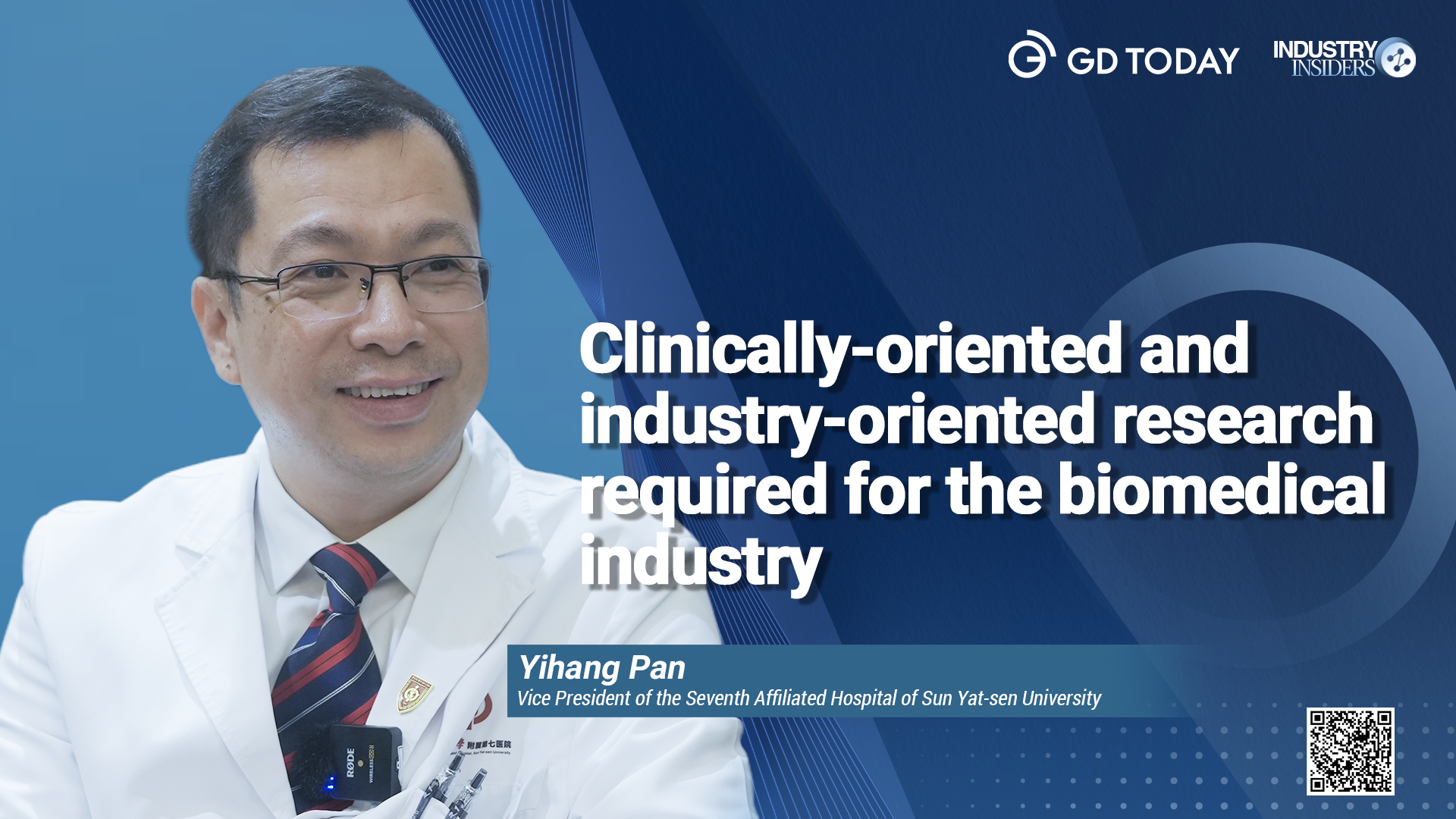“Universities, hospitals, biomedical companies, and local governments should join forces and make plans to promote the biomedical industry, including bringing in talents and technologies, so as to truly benefit people’s health and wellbeing,” said Yihang Pan, Vice President of the Seventh Affiliated Hospital of Sun Yat-sen University (SAH-SYSU), and Vice Dean of SYSU School of Medicine.
Guangdong aims to continue improving the existing eight trillion-RMB industrial clusters and in the meantime nurture new trillion-RMB clusters covering a range of technology areas such as ultra-high-definition video display, biomedicine and healthcare, and new energy according to the 2023 Guangdong government work report.
“To achieve this goal, we need to promote clinically oriented and industry-oriented research,” Pan commented.

Coming back and engaging in founding a new hospital for his alma mater
Having been impressed by the enthusiasm and potential of SYSU and Shenzhen and out of love for his alma mater, Pan returned from the United States in March 2017 to spearhead the construction of the SAH-SYSU. “In the early days after my returning to China, my friends came to see me and found the conditions of the construction site to be so harsh. But they were surprised to see that our team was full of excitement every day and I looked confident in our success.”
He recalled, “Being able to return to my alma mater to participate in the construction of a new hospital is a precious opportunity for me. And it’s a good platform for clinically oriented research, translational development, and scientific breakthroughs.”
Not far from the SAH-SYSU, the SYSU Shenzhen Campus has recently completed its first construction phase. This new campus is home to engineering, medical science, and agricultural science colleges, focusing on China’s strategic technologies, Shenzhen’s innovative development and future industrial planning.
“In the second construction phase of our hospital, we will build a 60,000-square-meter research laboratory space, including 10,000-square-meter biological specimen bank and upon completion provide a total of 4,000 beds for patients,” said Pan.
He added, “We also visited internationally renowned research institutions, including UCL (University College London), the Francis Crick Institute, and many scientific research institutions in the United States. We have been communicating with several Nobel Laureates, and launched two Nobel Laureate laboratories.”
To highlight the advancements of scientific research and global collaborations in SAH-SYSU during the past few years, Pan made a special mention of the work led by Professor Axel Behrens, an honorary professor of SAH-SYSU and collaborated with Professor Yulong He, president of SAH-SYSU. They found that the loss expression of GREM1 is essential for the pathogenesis of pancreatic cancer, and the restoration of GREM1 expression showed great promise to turn pancreatic cancer into benign cysts. This work has been published on the world-renowned magazine Nature, and recently the first author of this paper, Dr. Linxiang Lan, has joined the SAH-SYSU as a Principle Investigator (PI).
Why would they cooperate with SAH-SYSU? Pan believes that the reason lies in Shenzhen’s dedication to fostering the growth of the biomedical sector.
A biomedical industry chain being formed in Shenzhen’s Guangming District
In recent years, Shenzhen has prioritized the growth of the biomedical industry. “For the development of medical services in Shenzhen , we started to build the SAH-SYSU in 2016. Then we put forward a new idea of integrating medical science and engineering, and now SAH-SYSU continues to expand, attracting more biomedical companies to settle here,” Pan said.
Pan noted that their researchers are required to spend 70 percent of their time on translational research and therefore they need to collaborate with clinical departments.
The Shenzhen Bay Laboratory has soon been established, and the Shenzhen Medical Academy of Research and Translation (SMART), led by (US) Academician Nieng Yan, has also chosen Guangming.
In 2020, the Guangming Science City has been approved as the fourth National Comprehensive Science Center in China. Previously, China has approved the establishment of three National Comprehensive Science Centers in Beijing, Shanghai, and Hefei, Anhui Province.
Statistics show that in 2022, Guangdong’s biomedicine and healthcare industry cluster achieved an operating income of 411.283 billion RMB, a year-on-year increase of 14.71 percent. It has already built 10 comprehensive biomedical industrial parks and cultivated two enterprises with more than 50 billion RMB in sales revenue.
Reporter | Hannah
Video shooting | Qin Shaolong, Hannah
Video editing | Axin
Poster | Lulu
Editor | Olivia, Nan, Jasmine, James
















